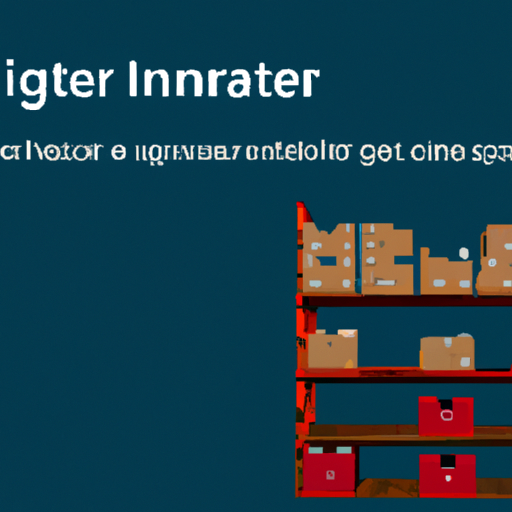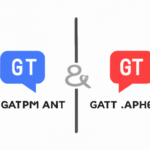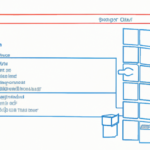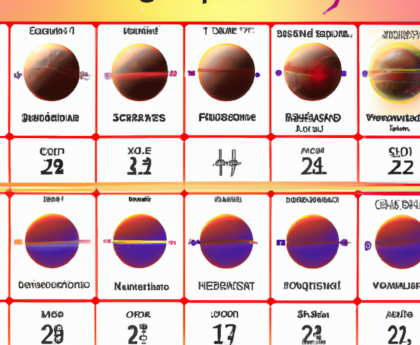“Build Your Warehouse with Ease: Learn How to Create a CodeIgniter 3 Application with Rows, Racks, Shelves, and Bins!”
Introduction
Building a code igniter 3 application for a warehouse with rows, racks, shelves, and bins can be a daunting task. However, with the right guidance and examples, it can be done in a few simple steps. In this article, we will discuss the basics of building a code igniter 3 application for a warehouse with rows, racks, shelves, and bins. We will go over the necessary components, the steps to take, and provide examples to help you understand the process. By the end of this article, you should have a better understanding of how to build a code igniter 3 application for a warehouse with rows, racks, shelves, and bins.
Troubleshooting Common Issues with CodeIgniter 3 Warehouse Applications
CodeIgniter 3 is a powerful open-source web application framework used to develop dynamic web applications. It is widely used in warehouse applications due to its robustness and scalability. However, like any other software, CodeIgniter 3 applications can experience issues. This article will discuss some of the most common issues and how to troubleshoot them.
1. Database Connection Issues:
Database connection issues are one of the most common issues with CodeIgniter 3 applications. This can be caused by incorrect database credentials, incorrect database configuration, or a lack of database privileges. To troubleshoot this issue, first check the database credentials in the database configuration file. If the credentials are correct, then check the database configuration and make sure it is correct. Finally, check the database privileges and make sure the user has the necessary privileges to access the database.
2. 404 Errors:
404 errors are another common issue with CodeIgniter 3 applications. This can be caused by incorrect routing, incorrect controller names, or incorrect URL paths. To troubleshoot this issue, first check the routes in the routes.php file and make sure they are correct. Then check the controller names and make sure they are correct. Finally, check the URL paths and make sure they are correct.
3. Performance Issues:
Performance issues are another common issue with CodeIgniter 3 applications. This can be caused by inefficient code, slow database queries, or a lack of caching. To troubleshoot this issue, first check the code and make sure it is efficient. Then check the database queries and make sure they are optimized. Finally, check the caching and make sure it is enabled.
4. Security Issues:
Security issues are another common issue with CodeIgniter 3 applications. This can be caused by insecure code, weak passwords, or a lack of security measures. To troubleshoot this issue, first check the code and make sure it is secure. Then check the passwords and make sure they are strong. Finally, check the security measures and make sure they are in place.
By following these steps, you should be able to troubleshoot the most common issues with CodeIgniter 3 warehouse applications. If you are still having issues, it is recommended that you contact a professional for assistance.
Optimizing Warehouse Performance with CodeIgniter 3
Warehouse performance is a critical factor in the success of any business. It is essential to ensure that warehouses are running efficiently and effectively in order to maximize profits and minimize costs. CodeIgniter 3 is a powerful open-source web application framework that can help optimize warehouse performance.
CodeIgniter 3 is a lightweight, yet powerful, PHP framework that enables developers to quickly and easily create dynamic web applications. It is designed to be simple and straightforward, allowing developers to focus on the core functionality of their applications. CodeIgniter 3 also provides a range of features that can help optimize warehouse performance.
One of the key features of CodeIgniter 3 is its ability to quickly and easily create database-driven applications. This allows warehouses to store and manage data more efficiently, reducing the time and effort required to manage inventory and orders. CodeIgniter 3 also provides a range of tools for creating custom reports and dashboards, allowing warehouses to quickly and easily monitor performance and identify areas for improvement.
CodeIgniter 3 also provides a range of tools for automating warehouse processes. This includes features such as automated order processing, inventory management, and shipping and receiving. Automating these processes can help reduce the time and effort required to manage warehouse operations, allowing warehouses to focus on other areas of their business.
Finally, CodeIgniter 3 provides a range of security features that can help protect warehouses from malicious attacks. This includes features such as encryption, authentication, and access control. These features can help ensure that warehouses are secure and protected from potential threats.
Overall, CodeIgniter 3 is a powerful and versatile framework that can help optimize warehouse performance. It provides a range of features that can help reduce the time and effort required to manage warehouse operations, as well as providing a range of tools for automating processes and protecting warehouses from malicious attacks. By leveraging the power of CodeIgniter 3, warehouses can ensure that they are running efficiently and effectively, maximizing profits and minimizing costs.
Designing a Warehouse Layout with CodeIgniter 3
Designing a warehouse layout is an important part of any business’s operations. It is essential to ensure that the warehouse is organized and efficient, as this will help to reduce costs and improve productivity. CodeIgniter 3 is a powerful web application framework that can be used to create a warehouse layout.
The first step in designing a warehouse layout with CodeIgniter 3 is to create a database. This database will store all of the information related to the warehouse, such as the items stored, the locations of the items, and the inventory levels. Once the database is created, the next step is to create the models. Models are classes that contain the logic for interacting with the database. They are responsible for retrieving, updating, and deleting data from the database.
The next step is to create the controllers. Controllers are responsible for handling user requests and returning the appropriate response. They are also responsible for validating user input and ensuring that the data is valid before it is stored in the database.
Once the models and controllers are created, the next step is to create the views. Views are responsible for displaying the data to the user. They are also responsible for handling user input and sending it to the appropriate controller.
Finally, the last step is to create the routes. Routes are responsible for mapping user requests to the appropriate controller. This allows the user to access the data they need without having to know the exact URL.
By following these steps, it is possible to create a warehouse layout with CodeIgniter 3. This will help to ensure that the warehouse is organized and efficient, which will help to reduce costs and improve productivity.
How to Create a Warehouse Inventory System with CodeIgniter 3
Creating a warehouse inventory system with CodeIgniter 3 is a straightforward process that can be completed in a few simple steps. CodeIgniter is an open-source web application framework that is used to develop dynamic web applications. It is based on the Model-View-Controller (MVC) architecture and is written in PHP.
The first step in creating a warehouse inventory system with CodeIgniter 3 is to install the framework. This can be done by downloading the latest version of CodeIgniter from the official website and extracting the files to a directory on your server. Once the files have been extracted, the next step is to configure the database. This can be done by editing the database.php file located in the application/config directory.
The next step is to create the database tables. This can be done by using the database migration feature of CodeIgniter. This feature allows you to create database tables from a single file. The migration file should contain the SQL commands to create the necessary tables. Once the migration file has been created, it can be executed by running the command “php index.php migrate” from the command line.
The next step is to create the models for the database tables. This can be done by creating a new file in the application/models directory. The model should contain the necessary functions to interact with the database tables.
The next step is to create the controllers for the application. This can be done by creating a new file in the application/controllers directory. The controller should contain the necessary functions to handle the requests from the user.
The last step is to create the views for the application. This can be done by creating a new file in the application/views directory. The view should contain the necessary HTML code to display the data from the database.
Once all of the necessary files have been created, the warehouse inventory system can be tested by running the command “php index.php” from the command line. If everything is working correctly, the application should be ready to use.
Exploring the Benefits of Using CodeIgniter 3 for Warehouse Management
CodeIgniter 3 is a powerful open-source web application framework that is used to develop dynamic web applications. It is a popular choice for developing warehouse management systems due to its robust features and ease of use. This article will explore the benefits of using CodeIgniter 3 for warehouse management.
First, CodeIgniter 3 is highly secure. It has built-in security features such as input validation, output filtering, and SQL injection prevention. This ensures that the data stored in the warehouse is safe from malicious attacks. Additionally, CodeIgniter 3 is highly scalable, allowing for the addition of new features and functionality as the warehouse grows.
Second, CodeIgniter 3 is easy to use. It has a simple and intuitive user interface that makes it easy to manage the warehouse. It also has a wide range of built-in libraries and helpers that make it easy to develop custom applications. This makes it easy to customize the warehouse management system to meet the specific needs of the business.
Third, CodeIgniter 3 is cost-effective. It is an open-source framework, so there are no licensing fees or other costs associated with using it. Additionally, it is easy to maintain and update, which reduces the cost of ownership.
Finally, CodeIgniter 3 is highly reliable. It is built on a stable and secure platform, so it is unlikely to experience any downtime or other issues. This ensures that the warehouse management system is always up and running.
In conclusion, CodeIgniter 3 is an excellent choice for developing warehouse management systems. It is secure, scalable, easy to use, cost-effective, and reliable. These features make it an ideal choice for businesses looking to develop a warehouse management system.
Step-by-Step Guide to Building a Warehouse Management System with CodeIgniter 3
Introduction
A Warehouse Management System (WMS) is a software application that helps manage the operations of a warehouse. It is used to track inventory, manage orders, and optimize the storage and retrieval of goods. WMS systems are essential for businesses that need to store and manage large amounts of inventory. In this guide, we will discuss how to build a WMS using CodeIgniter 3, an open-source web application framework.
Step 1: Install CodeIgniter
The first step is to install CodeIgniter. This can be done by downloading the latest version of the framework from the official website. Once the download is complete, extract the files and move them to the desired location.
Step 2: Set Up the Database
The next step is to set up the database. This can be done by creating a new database in your preferred database management system (MySQL, PostgreSQL, etc.). Once the database is created, create a new user and grant them access to the database.
Step 3: Configure CodeIgniter
Once the database is set up, the next step is to configure CodeIgniter. This can be done by editing the configuration file located in the “application/config” folder. In this file, you will need to set the base URL, database settings, and other settings.
Step 4: Create the Models
The next step is to create the models. This can be done by creating a new folder in the “application/models” folder and adding the necessary model files. The models will be used to interact with the database and perform CRUD operations.
Step 5: Create the Controllers
The next step is to create the controllers. This can be done by creating a new folder in the “application/controllers” folder and adding the necessary controller files. The controllers will be used to handle requests and render views.
Step 6: Create the Views
The next step is to create the views. This can be done by creating a new folder in the “application/views” folder and adding the necessary view files. The views will be used to display the data to the user.
Step 7: Test the Application
The final step is to test the application. This can be done by running the application in a web browser and testing the various features. Once the application is tested and working correctly, it can be deployed to a production server.
Conclusion
In this guide, we discussed how to build a Warehouse Management System using CodeIgniter 3. We discussed how to install CodeIgniter, set up the database, configure CodeIgniter, create the models, create the controllers, create the views, and test the application. With this guide, you should now have a better understanding of how to build a WMS using CodeIgniter 3.
Conclusion
Building a code igniter 3 application for a warehouse with rows, racks, shelves, and bins is a complex task that requires a great deal of planning and development. However, with the right guidance and examples, it can be done. By following the steps outlined in this article, you can create a powerful and efficient application that will help you manage your warehouse and its contents. With the right tools and knowledge, you can create a powerful and efficient application that will help you manage your warehouse and its contents.




